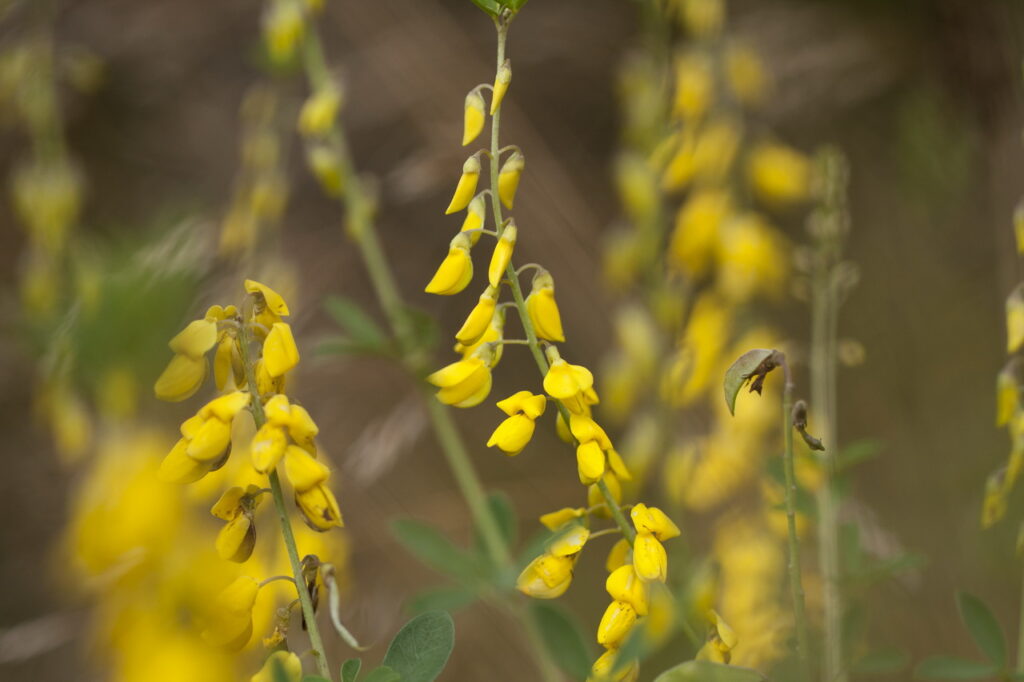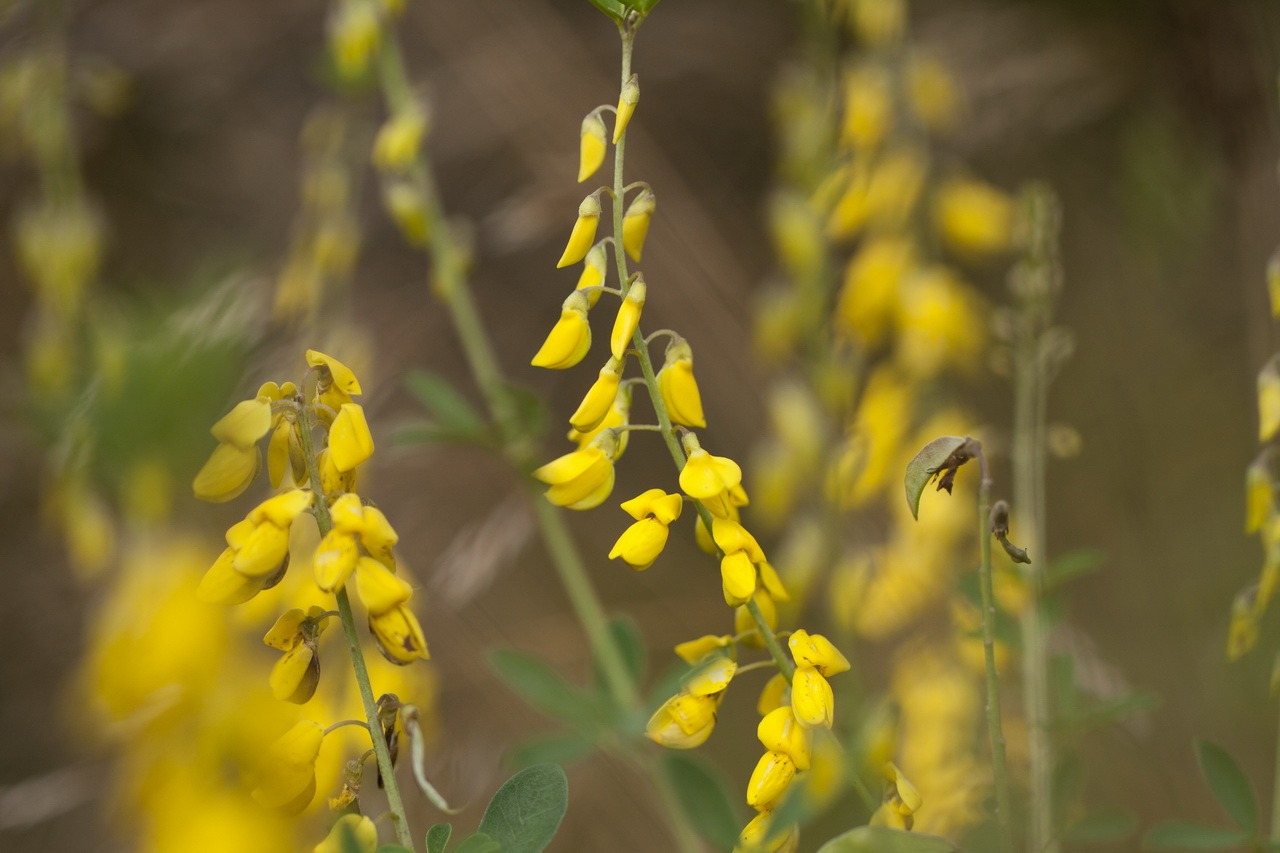Hedysarum (sweetvetch) is a genus of the botanical family Fabaceae, consisting of about 200 species of annual or perennial herbs in Asia, Europe, North Africa, and North America. The yellow inflorescences of sweetvetch, which have a characteristic honey smell and a very pleasantly tangy, spicy, sweetish taste, are most often used to produce CO2 extracts.
In folk and official medicine, the active ingredients of sweetvetch are used to treat thrombophlebitis, colds, rheumatism, joint inflammation, diseases of the lungs and the urogenital system and skin inflammation. Increases blood coagulation, promotes the regeneration of liver cells, is part of drugs for the treatment of rheumatism and oncology.
Since sweetvetch has a very light aroma that is reminiscent of the smell of grass and flowers, which is caused by the high content of coumarins in flowers and grass, it is used as a flavoring substance in the confectionery industry, for flavoring alcoholic beverages and for flavoring tobacco and Tea used. Sweetvetch is not used in the food industry due to its increased toxicity.
Concentrated 100% CO2 extract from sweetvetch is a yellowish-brown oily liquid with a very strong odor. The biological activity of the CO2 extract of sweetvetch can serve as a component for drugs that increase blood pressure, stimulate the formation of leukocytes and the work of the heart, improve blood flow to some internal organs, prevent thrombus formation and prevent blood clotting in the vessels. Stimulates the production of estrogens.

Chart 1. The main ingredients of the CO2 extract of medicinal sweetvetch
| NAME | CONTENT IN% OF THE AMOUNT OF VOLATILE COMPONENTS | EFFECT |
|---|---|---|
| Coumarin | 27 | Anticoagulant, antispasmodic, sedative, with psoriasis |
| N-Nanocosan | 27 | Refers to saturated hydrocarbons, a fat-like compound. It has wound healing and anti-inflammatory properties |
| Palmitic acid | 12 | Unsaturated fatty acid for water repellency in cosmetics |
| Linolenic acid | 7,6 | An unsaturated, essential fatty acid from the class of omega-3 fatty acids. It has a membrane protecting, angioprotective effect. Immunomodulatory, improves brain metabolism |
| Linoleic acid | 5,1 | An essential omega-6 polyunsaturated fatty acid that is essential for the functioning of cell membranes |
| N-Heptacosan | 2,9 | Component of natural waxes, has a regenerating and strengthening effect. It’s a steroid compound. Has an antimicrobial effect |
| N-gentriacontan | 2,9 | Immunomodulator, improves memory, attention, has anti-tumor activity |
| Phytol | 1,7 | active ingredient (vitamin K1). Increases blood clotting and viscosity. Increases bone strength and prevents bone loss (osteoporosis). Protects against the build-up of calcium in soft tissues, including blood vessels and heart valves. Immunomodulator. Accelerates the absorption of hematomas, regenerates the skin after chemical peels and sunburn. It is an active transdermal transporter |
| Arachidilol | 0,8 | Humectant in cosmetics |
| Vitamin E (alpha-tocopherol) | 0,5 | Supports the stability of red blood cells, normalizes metabolic processes. An active antioxidant. Prevents thrombophlebitis and the deposition of fatty deposits in the vessels |
More than 60 compounds with biological activity have been identified in the CO2 extract from sweetvetch.
In cosmetics, the CO2 extract of sweetvetch is valued as:
- a remedy with the ability to relieve swelling
- an agent that slows down the aging of the skin, makes it supple and actively moisturizes it
- additive that eliminates the effects of skin exposure to adverse factors
- additive for the effective fight against abscesses, acne
- additive in compositions to combat cellulite.
Recommended for use in cosmetic emulsion products for face and décolleté skin care.
The CO2 extract of sweetvetch can be used in concentrated form, in the form of oil solutions and in the form of microemulsions that form optically transparent pseudo-solutions in water and aqueous-alcoholic solutions.
Chart 2. Application rates, recommendations for the use and storage of St. John’s Wort CO2 extract
| Food usage rates | Item А100: 0.003% (30g per ton) Water-soluble microemulsions EMA1: 0.2% (2l per 1000l or 2ml per liter) |
| Application rates in cosmetics | Item А10: 1-3% Item А100: 0.1-0.3% |
| Recommendations for use | It is recommended to add CO2 extracts in the final stages of preparation, in the cooling phase of the end product. |
| Storage Instructions | It is recommended to store CO2 extracts in a closed container in a cool room and avoid direct sunlight. |
Historical reference
The healing properties of sweetvetch have been known since ancient times. It has been widely used in medical practice by doctors from many countries. It is described in the reference work for medicinal substances “De materia medica” by the ancient Roman doctor Pedanius Dioscorides. The Roman doctor Galen treated the wounds and mutilations of gladiators with sweetvetch. The famous ancient healer Avicenna repeatedly mentioned this plant in his writings. Avicenna’s respectful attitude towards sweetvetch is also underlined by the fact that he called this plant “the royal crown”. In the Middle Ages, preparations made from sweetvetch were widely used by Paracelsus.
